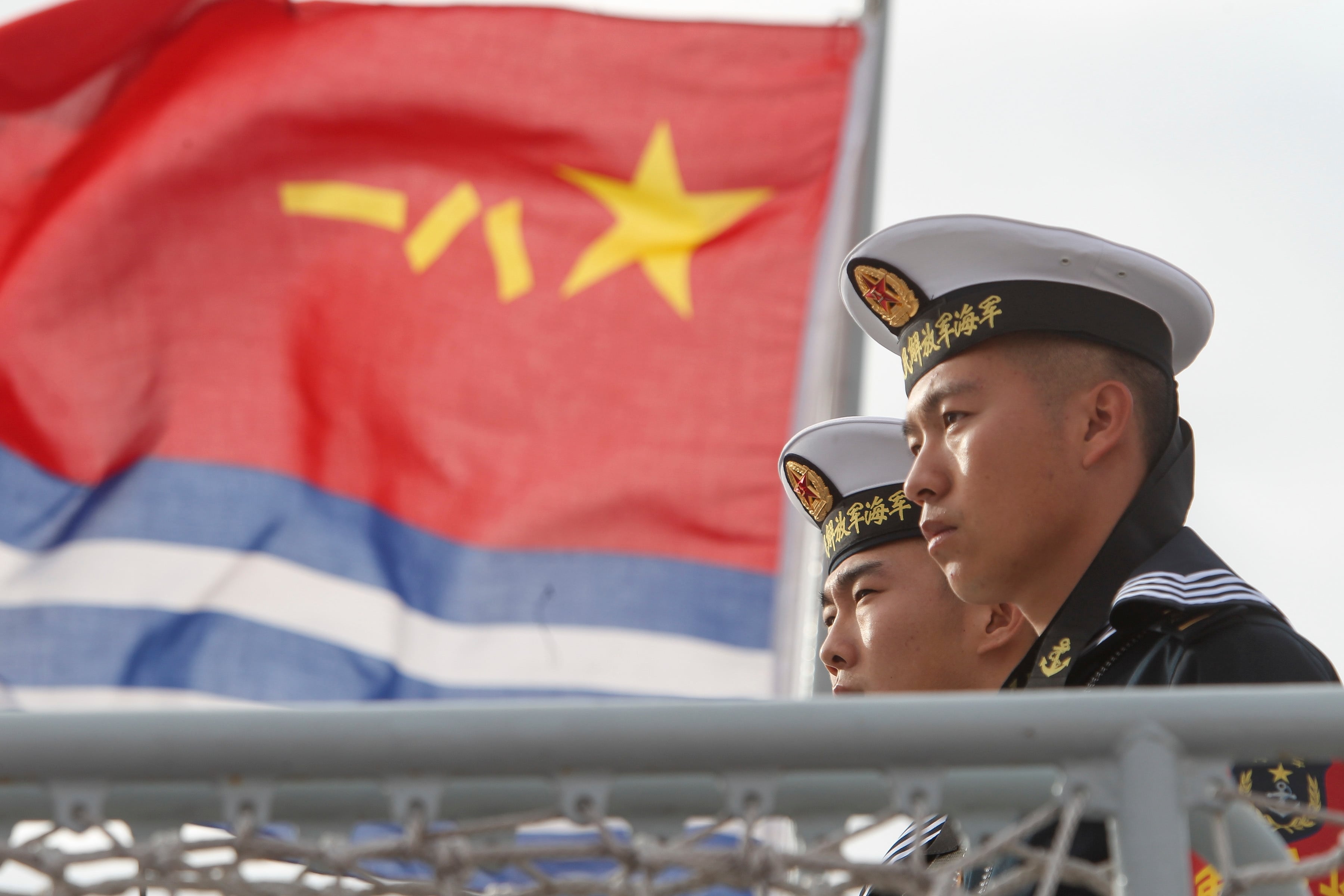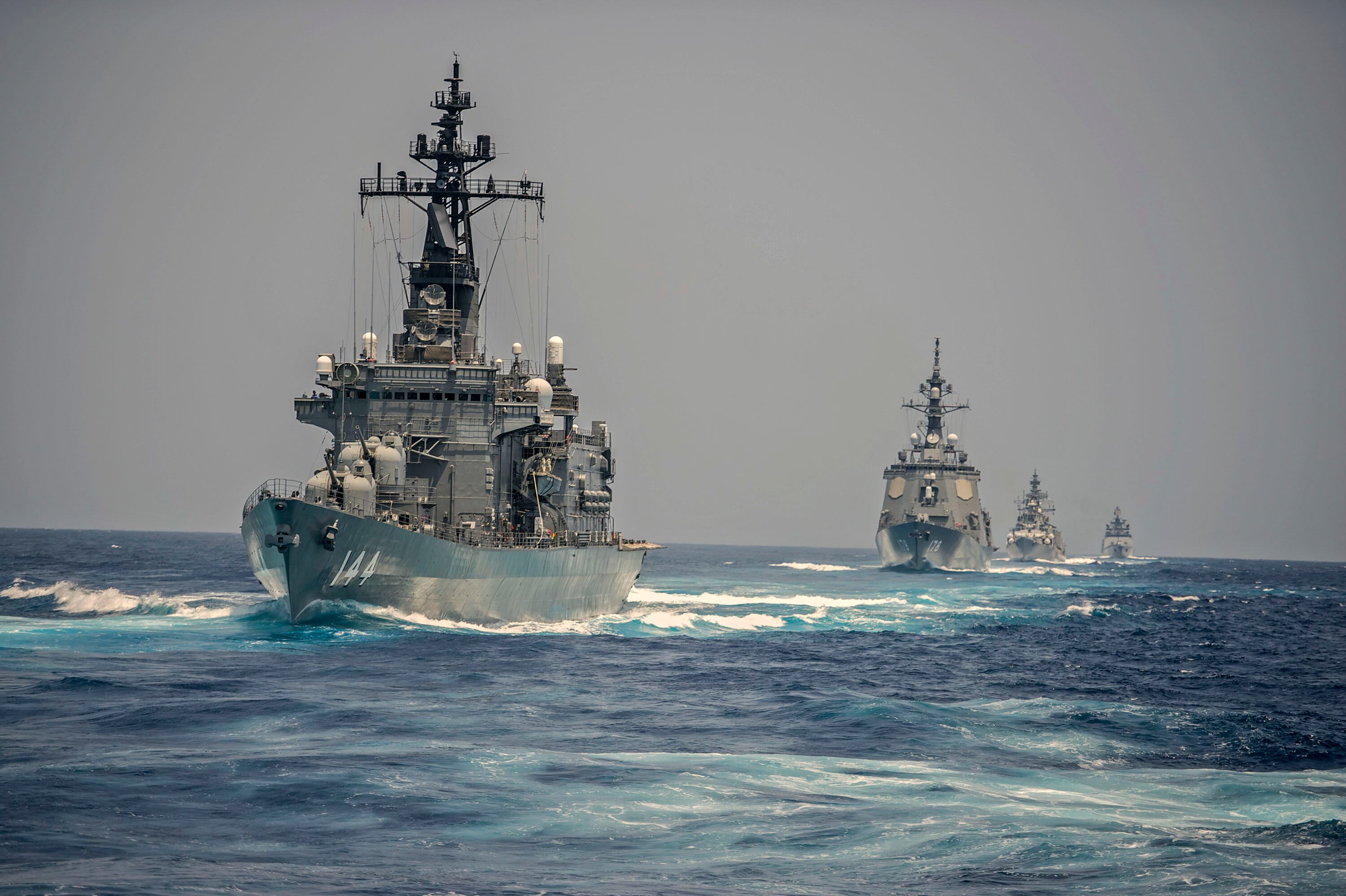MELBOURNE, Australia — China’s carrier aviation programs continue apace with the focus starting to shift toward the development and introduction of training and specialized aircraft as China’s first domestically built carrier approaches the start of sea trials.
The reported decision to proceed with China’s version of the Electromagnetic Aircraft Launch System will also have an impact on these programs, and will allow China’s People’s Liberation Army Navy, or PLAN, to operate a wider variety of aircraft from onboard its carriers, allowing it to have better-rounded carrier air wings and enhance its capabilities.
Flying Shark growth
Currently, the PLAN only has a single type of fixed-wing carrierborne aircraft in service. This is the Shenyang J-15 Flying Shark multirole fighter. The J-15 is one of several Chinese-developed derivatives of Russia’s Sukhoi Su-27 Flanker family. Like the land-based J-11 and J-16, the J-15s are equipped with indigenous avionics and weapons, although the engines are still the Russian Saturn AL-31 turbofans.
Approximately two dozen J-15s have been produced so far in two production batches, and these are currently only able to operate from the ski jump-equipped Liaoning aircraft carrier and the Type 002 carrier being fitted out in the city of Dalian.
China is known to have at least one of the six J-15 prototypes fitted with catapult launch accessories on its nose landing gear, and the country is carrying out catapult tests with this aircraft, using what are believed to be a steam catapult and EMALS at an air base near Huludao, Liaoning province in northern China.
In addition, China is developing a twin-seat variant of the J-15, with at least a single prototype known to be flying from Shenyang Aircraft Corporation’s facilities located in its namesake city. It is likely this variant, designated the J-15S, will operate from the future, catapult-equipped carrier China will build after the Type 002 as a two-seat multirole fighter alongside single-seat J-15s, much like the mix of single-seat Boeing F/A-18E Super Hornets and twin-seat F/A-18Fs onboard a typical U.S. Navy carrier air wing.
Future production batches of J-15s are also expected to be fitted with more modern avionics, such as those already fitted to the J-16 fighter that will included an active electronically scanned array radar.
The electronic warfare/electronic attack technology being developed for a specialized variant of the J-16 may also be introduced on the J-15.
However, these are unlikely to be fielded in the near term, but rather are expected to enter service in the early part of the next decade, at the earliest.
RELATED

Improved pilot training
The PLAN is also revamping its pilot training program with the intention of streamlining the process of training its pilots. The service sees an urgent need for 400 new pilots in the coming years with the introduction of new land- and carrier-based aircraft types. Last year, China merged the naval aviation academy and its aeronautical and astronautical university into the Naval Aeronautical University.
The move will also reduce dependence on the People’s Liberation Army Air Force for basic pilot training, while the introduction of the Hongdu JL-10H lead-in fighter trainer also simplifies the pilot training syllabus. The JL-10H — with superior avionics and performance to the earlier Guizhou JL-9 jet trainer previously used by the PLAN — will be able to shorten the training of the PLAN’s fighter pilots from three to two phases.
However, the PLAN lacks a dedicated trainer aircraft used to qualify carrier pilots, with the J-15 currently being used in this role. An attempt was made to develop a carrier trainer version of the JL-9 for this purpose, but this was unsuccessful; reports suggest the JL-9’s fuselage was unable to cope with the stress involved in arrested landings onboard carriers.
It is unknown if an attempt will be made to develop a variant of the JL-10H for such a purpose, although such a move would make sense because a dedicated carrier trainer aircraft would have the advantages of lower operating costs, a more streamlined pilot training process and a reduction in demands on the J-15 fleet.
EMALS and more aircraft
As Defense News previously reported, if China were to build its third carrier equipped with an EMALS as expected, the PLAN will be able to operate a wider variety of aircraft from its carriers, opening up the possibility of equipping its air wings with an aircraft similar to the Northrop Grumman E-2 Hawkeye airborne early-warning aircraft.
The PLAN’s current shipboard airborne early-warning asset is the Changhe Z-8 helicopter fitted with a radar that can be stowed when not in use. However, compared to a fixed-wing aircraft, an airborne early-warning helicopter has severe shortcomings in endurance, which reduces the asset’s time on station, and in operating altitude, which reduces the effectiveness of the radar.
RELATED

China previously built a mock-up of a Xi’an Y-7 with a heavily modified tailplane and a radar rotodome on top of its fuselage around the year 2010. Yet, there has been no further development of that project since then.
A similar mock-up was seen on the carrier flight deck test bed at a naval testing facility in Wuhan, Hubei province, in early 2017, indicating that China is still interested in developing such a platform.
Mike Yeo is the Asia correspondent for Defense News.








